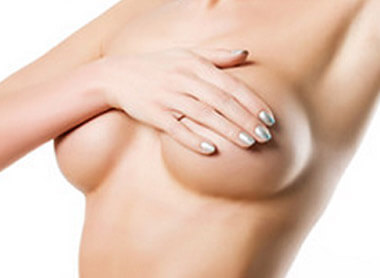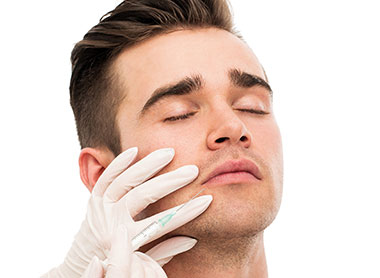Blepharoplasty is one of the most popular aesthetic surgical procedures. The chances are excellent that you will be happy with your surgery, especially if your opinions about its process and expectations are realistic. The positive effect of freshening-up your eyes & eliminating their tired appearance will benefit your self-confidence, which should last for years. But always bear in mind that this procedure will never stop the ageing process. The clock can be set back, but it will not stop running!
- Face - introduction
- Eyelid Surgery
- Ear Reshaping Surgery - Otoplasty
- Face and Neck Lift
- Nose reshaping surgery
- Lip Augmentation
- Gallery
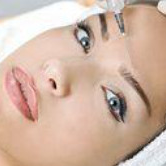
Eyelid Surgery

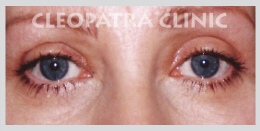

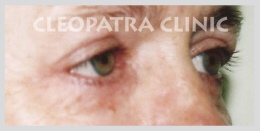
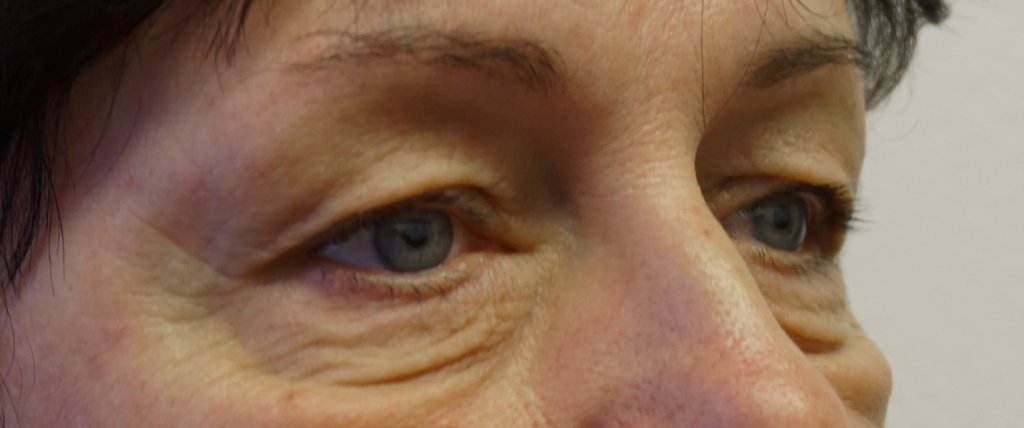
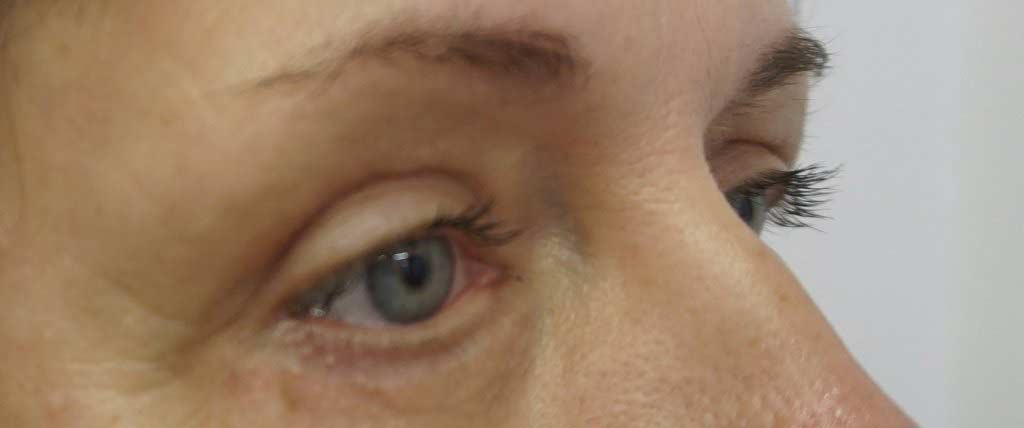
Gallery
Bottom - removal of excess skin and fat cells
before the procedure
after the procedure
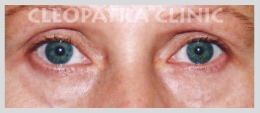
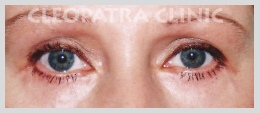
lower eyelid surgery
Lower eyelid surgery with removal of fatal prolapse
Top and bottom - male, removing excess skin and fat capsules
before the procedure
after the procedure

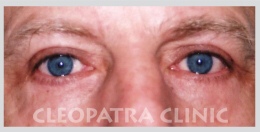
upper and lower eyelid surgery
upper and lower eyelid surgery to remove fatty prolapse
before the procedure
after the procedure
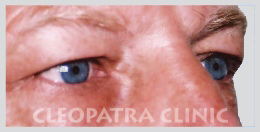
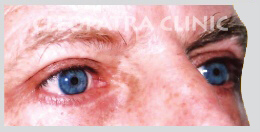
Upper - very heavy finding, removing excess skin and fat cells
before the procedure
after the procedure

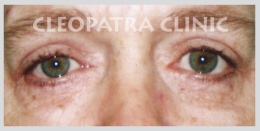
upper and lower eyelid surgery
upper and lower eyelid surgery to remove fatty prolapse
before the procedure
after the procedure


Upper and lower - male - removal of excess skin and fat cells
before the procedure
after the procedure
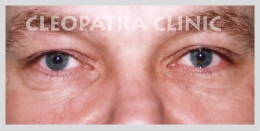
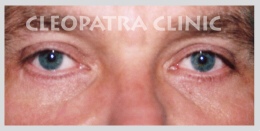
before the procedure
after the procedure
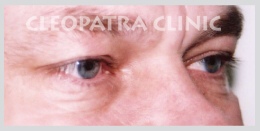
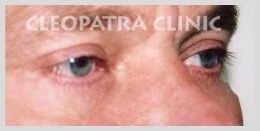
Upper and lower - Removal of excess skin and fat cells
before the procedure
after the procedure


before the procedure
after the procedure
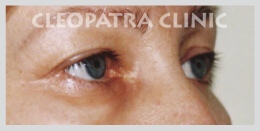

before the procedure
after the procedure
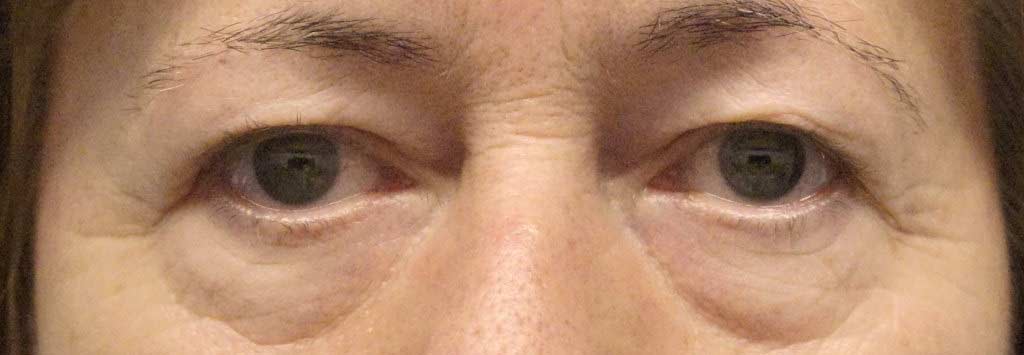

before the procedure
after the procedure


before the procedure
after the procedure
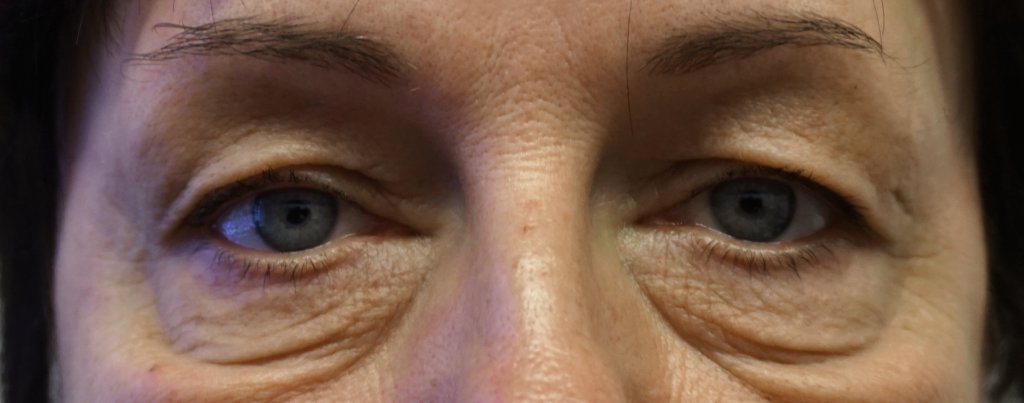
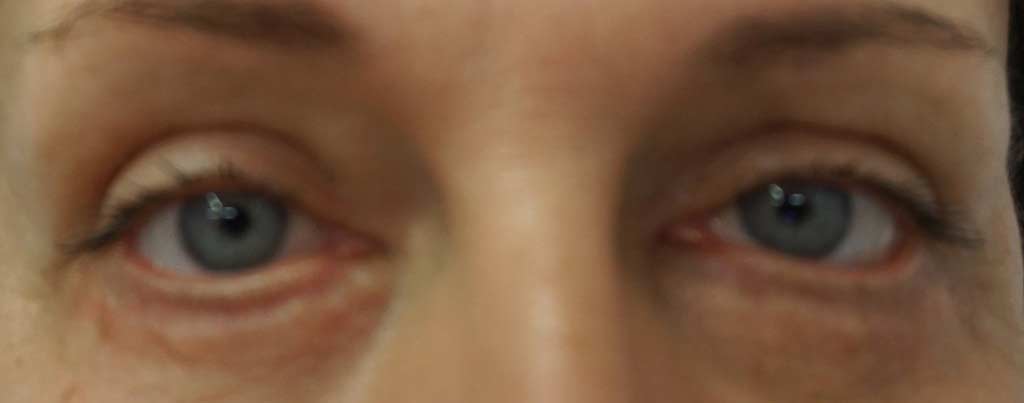
Introduction
Not that many of them have talked about it themselves, but other people have speculated that celebrities such as actors Chris Noth, Kate Winslet, Rupert Everett, Madeleine Stowe, and singers such as Madonna, Keith Urban, in addition to the future King of England’s wife, Kate Middleton, have had theirs ‘done’. We’re talking…eyes! More specifically, blepharoplasty correction on eye-lids or the eye ‘orbit’ wider area.
Our eyes are the most significant feature on our face& their beauty can be greatly reduced by excess skin, wrinkles & eye-bags. Blepharoplasty – eyelid surgery – is a procedure for removing fat bags & excess skin from the upper & lower eyelids, and can be done alone or in combination with other surgery.
Sagging eyelid skin is a part of the normal ageing process resulting in excess folds and wrinkles. In most cases also, fat prolapse around the eye itself, which is seen as eye bags in the upper & lower lids. This happens mostly to people over age 40. Should these imperfections affect even younger people, heredity tends to be the most important factor. Our youngest patient who had upper eyelid surgery was 18! Patients with eye bags & excess skin around the eyes are often discontented with their appearance. In addition they are frustrated over comments from their friends that they look tired, although they had a good night’s rest. The reason for early-morning eye puffiness is, among others, that the circular muscle around the eye orbit was not in motion at night & could not draw out swelling that forms when in a lying-down position.
Patients often admit that they push back these bags & swelling with cold spoons in the morning. Although eyelid surgery can correct sagging upper eyelids & reduce the puffy eye bags below your eyes, it cannot eliminate crow’s feet lines or erase all eyelid creases. Any attempt to do so would require excessively intensive stretching of the skin that would result in pulling the eyelids downwards (ectropium) with “eye popping face” & staring appearance. Also, with this, your upper lids would not be able to close over your eye entirely, not even in sleep. This procedure does not involve brow lift either. Sagging eyebrows often form a seeming excess skin on the upper eyelid looks as the arch of the upper eyelid has been ‘wiped’ or hooded-over.
If this is what the preoperative finding demonstrates, we recommend even correction of sagging eyebrows so as to achieve the best results. Procedures designed for lifting eyebrows include – brow lift with screw fixation to a skull bone (see a separate chapter Brow Lift – Brow suspension), brow lift using threads with “barbs” or “tines” (see the Aptos Lift chapter) or overall surgical forehead lift leaving scar behind the hairline – frontal lift.
Dark circles under the eyes are very difficult to deal with. A satisfactory success can be reached in patients with dark circles under the eyes, who have considerably large fat bags (prolapses). These will be used for underlying the sunken dark circles. Sharp depressions & incisions will be balanced, and the darkness of the circles will be slightly reduced. As for the eyelid surgery & its impact on the change in the eye shape, you must understand something important. And, that is, whereas the procedure can add an upper eyelid crease to Asian eyes, it cannot erase features typical for your ethnic or racial heritage. On the other hand, in some patients the positive effect might be improving vision by eliminating excess skin from the upper eyelids, which hangs down & can interfere with peripheral vision. A well-performed eyelid surgery will brighten your face & very often restores a more youthful appearance. After the procedure the patient looks refreshed and relaxed. This is appreciated by the patients themselves as well as their friends.
Am I a suitable candidate for this surgery?
The best patients are those who are healthy, mentally stable & well-motivated. Most people are over 35, but if saggy, baggy eyelids are inherited, you may decide to undergo blepharoplasty even at a younger age. Our youngest patient who had her naturally-endowed excess skin removed was 18. There is no upper age limit, providing your state of health is good, of course. Our oldest patient who had eyelid surgery was 84! During the consultation a doctor will ask you about your general medical history in order to determine any potential medical conditions that could increase the risk of the surgery. These could include serious grey or green cataract, diabetes treated with insulin (type 1 DM), or tear production disturbances.
What does the surgery involve?
As for the upper eyelid, the incision is made in the natural crease line located approximately 1 cm above the eyelashes & ends about 1 cm from the outer corner of your eye – in the crow’s feet area towards the temple. In this case the surgery is to remove excess skin & fat forming the eye bags. After the incisions are made, the upper eyelids are relieved from excessive skin, and sometimes a part of muscle, and also, if present, excessive fat prolapse. The incisions are then closed with very fine intradermal sutures. Concerning the lower eyelids, the technique much more depends on the patient’s individual eye-orbit conditions, and his requirements. If your problem is mainly prominent lower bags without excessive loose skin, it is possible to perform surgery which does not leave any external scars – trans-conjunctival blepharoplasty. In this surgery the incision is made inside your lower eyelid in the conjunctiva area from where the fat bags are removed, under general anaesthetic. If loose skin must be trimmed, the incision runs all the way under lower eyelid about 1 mm underneath the eyelashes where women apply their eyeliner, and ends approximately 1 cm outwards to the crow’s feet lines.
The skin is lifted & tensioned upwards, and its excess is carefully & exactly trimmed off. Before suturing, any bleeding is stopped. In the event of sunken under-eye circles, Cleopatra Clinic offers a special technique in under eyelid surgery – so called fat prolapse distribution. It means that the lower lid fat bags are sutured in a special way with facial fat, creating pads under sunken & dark lower eyelid skin.
What type of anaesthetic is used?
Since it is very important that the patient’s eyes co-operate in the surgery, blepharoplasty is most often performed under local anaesthesia. Only in case of trans-conjunctival approach the procedure is carried out using short local anaesthesia – approximately 30 minutes. Some other clinics however perform eyelid surgery under general anaesthesia. But such approach increases the risk of potential complications & not quite accurate results because of lessened control over the amount of removed skin. In local anaesthesia, the skin around your eyes will be numbed using an injection. In the case of a general anaesthetic you will be completely asleep. Deciding what type of anaesthetic is suitable for you is the matter of consultation. Surgery is usually performed on an outpatient basis.
How long does the surgery take?
Eyelid surgery takes usually between 30 and 45 minutes - depending on the extent of surgery.
What happens after the surgery?
Suturing the skin of upper & lower eyelid is done with a single fine suture underneath the skin surface. In order to strengthen the wound, thin strips of adhesive plaster will be applied. Sutures will be removed after 5 days. In the trans-conjunctival technique mentioned above there is no suturing. Immediately following surgery you will be given one analgesic tablet to relieve pain. In most cases this is enough to control any postoperative pain. In addition you will be advised to apply cool black tea compresses to your eyes, and take anti-swelling medications. These will be offered to you directly in the clinic. You should wear large sunglasses in the first week after surgery – they help to hide the effects of surgery & prevent the flying dust from getting into the swollen eyes. After your discharge please read the postoperative instructions carefully and obey them.
What are the scars like?
All surgery involves scars – bigger or smaller. More or less noticeable. Plastic surgery tries to produce these as small, thin & inconspicuous as possible. On the upper lid the scar is placed in the natural crease line & extends about 1 cm into the crow’s feet lines towards the temple. Immediately after surgery it is therefore minimally visible when the eye is open. On the lower lid, the scar runs along the whole eyelid (where women apply their eyeliner) and extends outwards into the crow’s feet region. This scar is nearly imperceptible after 3 months or so, as the red colouring fades. Generally, blepharoplasty scars heal relatively well. However variations in the healing process occur among individuals. Scars in the very thin skin in the upper & lower eyelid area heal within 5-7 days. After reddening subsides & a couple of months pass, they leave a nearly invisible line. The scars extending into the crow’s feet region where the skin is thicker can appear more reddened & tough than the others. Time & pressure massages help these to get softer & fade. It will take about 3 months. Massages generally facilitate the maturation process, and is recommended in all cases.
Is it painful?
Your eyelids may feel sore & tight after the anaesthetic has worn off. Immediately after surgery you will be given one common analgesic tablet which in most patients manages any postoperative pain. Patients with lower pain threshold will probably require analgesic administration for 1-2 more days where necessary. Several patients also experience a feeling of reduced sensitivity in the upper eyelid & eyelash region. This is quite normal, and full sensation will be regained in a couple of weeks, but three months at the most.
What could go wrong?
All surgery carries some uncertainty and risk. When a blepharoplasty is performed by a qualified plastic surgeon, complications are infrequent & usually minor. Still, individuals vary greatly in their anatomy, their physical reactions, and their healing abilities. So, the outcome is never totally predictable. You should expect swelling, bruising & temporary eyelash insensitivity. These are not complications. Potential complications include minor infections in the wound or eye (conjunctivitis – caused by temporary worse tear drainage because of swollen tear ducts), distortion or lumpiness of scars (usually temporary). Sometimes dry eyes or excessive tear production occurs (usually temporary). Ectropium (unnatural eversion of the eyelids) may occur as a result of excessive production of scar tissue, large swelling, reduced tension of the circular muscle around the eye, or very occasionally removing of a bigger amount of excess skin from the lower eyelids. The last-mentioned complication occurs, in high-quality clinics, extremely rarely.
The risk can be considerably reduced by early massaging of the scars. If the problem still develops, more intense massaging of the lid will help soothe this complication. Although under these circumstances it may take a couple of months to correct. Sometimes, if conservative treatment fails, then surgical correction is possible. A small portion of patients report, even a few months after surgery, a burning or cutting sensation. Sometimes slightly misty vision can occur. These patients are advised to consult an optician whose treatments can help to manage the condition.
Occasionally after a couple of months following surgery, tiny whiteheads may appear in the scars (epidermoid cysts), caused by the edges of skin while suturing. Rarely, a patient may experience eye bag (eyelid fat prolapse) reappearance after a few months following surgery. It is not caused by the use of an improper surgical method, but it’s the fact that the surgeon can remove only fat that saliently protrudes, during surgery. If the surgeon tried to remove more fat than was advisable, the eyeball could possibly ‘sink’ and the eye would become visibly slightly smaller. The further postoperative motion of the eyeball can force, outwards-towards-surface, any remaining fat prolapse, and recurrence of problem develops…but, likely to a less intensive effect. Small subsequent repeat-surgery can solve this problem. These risks can be considerably reduced by closely following your doctor’s instructions.
How long before I can get back to normal?
You should avoid straining your eyes by lengthy reading, watching television or working on your computer, for about 2-3 days following surgery. After that there is no limitation. It is also advisable not to wear contact lenses for 2-3 weeks. And, even after that time-period, you may still feel uncomfortable. You should plan to take it easy for the first week after surgery. During this time, take a good rest so that the body can spend its energy on healing. You should be able to return to work by 7-10 days. Bruising (haematoma) can be masked with light make-up. You may be more sensitive to sunlight, wind & other irritants for a couple of weeks. Therefore you should wear sunglasses & a protective sunblock. It is particularly important to avoid activities raising your blood pressure, including constant bending, lifting heavy objects & very intensive sport.
If I have flown, or travelled overland, to Ostrava to have this treatment, how soon can I travel back to my home country, and what does it mean for follow up visits?
For this procedure, you will be required to arrive at Cleopatra Clinic in Ostrava, at least ……(hours/days), before your operation, so that you can be prepared in the clinic. You (will/will not be) be required to stay over-night, on the night before your surgery, at the clinic. Immediately after your surgery, you will stay recuperating at Cleopatra Clinic for …....(hours/days). After completing this short Clinic-stay period, you must stay in your (hotel/apartment above Clinic) in Ostrava area for at least…..(hours/days), to comply with post-op check-up & bandage changes. After this period, you are fit to fly or travel overland, back to your home country. Your Cleopatra Clinic surgeon will advise you, at consultation, or during your initial phone call/email to us, about the possibilities of you arranging with a doctor in your home-country to perform final bandage-change/stitches-removal, where relevant. (Also, please do pay attention to your Cleopatra Clinic surgeon’s advice regarding necessary medical preparation documents you’ll need, before you travel to Ostrava, such as EEG, blood-tests, and chest x-ray, where applicable, for this type of operation.)
Can I travel to Ostrava as part of a holiday, and incorporate my first consultation at Cleopatra Clinic, into that holiday?
Of course you can! We have had several satisfied clients already, who dropped by our clinic to register their interest & intent to have an elective operation with us, and who’d actually been on vacation in the West Poland/East Czech Republic area. They had heard that Czechoslovakia is actually the birthplace of many historical advances in plastic surgery; and whose surgeons continue to teach and make advances in this area of medicine, finding new techniques which are then adopted & emulated by other surgeons all over the world.
There are many people who come to this part of the world to enjoy Poland’s Zakopane, Katowice, & Krakow, and Prague in Czech Rep., who made the trip to us, to make enquiries! Ostrava itself is a great little city, with a proud tradition of hardworking people, nestled in the west Silesia region. Many German, British, Danish and other European nationalities enjoy visiting this area, and find it a pleasure to travel on the Ostrava trams! With airlines such as Germanwings, Wizzair, Ryanair, easyJet and others, it is possible and more than convenient to travel here to enjoy the scenery, the local delicious local cuisine…and 500mls mug of delicious local Ostravar beer! Ostrava itself is undergoing a regeneration, and there are several top class new shopping malls you can visit, if so inclined. Also, go onto ‘trivago.com’, and get really great deals on hotels in every price range!
Summary
Our services
Write us
We will call you in the shortest possible time (within 1 hour).


